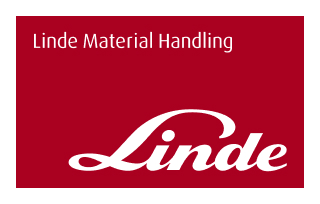- Blog
- General


We know that when compared to a conventional lead-acid battery, lithium-ion batteries in industrial trucks provide many advantages. Over the years we've received frequently asked questions regarding our lithium-ion battery systems, so we decided to put together a three-part series to explain this technology further. We hope you enjoy part one!
No, lithium-ion technology is very different from traditional lead-acid technology. Lithium-ion batteries have significant efficiency advantages, e.g. a much longer service life, highly efficient charging and reduced maintenance costs but are subject to special requirements for storage and transportation.
The Li-ION batteries guarantee a minimum of 2500 charging cycles (one cycle is considered to be the complete charge and discharge of the battery). This means that, up until this point, the battery retains approx. 75% of its original capacity for warehouse trucks (24V) and 80% for electric forklift trucks, reach trucks, and VNA trucks (48V and 90V products). In many cases, it is therefore possible to use the lithium-ion batteries for a second truck life.
Unlike traditional batteries, opportunity charging has no discernible effect on overall service life. Lithium-ion batteries are also not subject to the so-called memory effect. This means that the full energy capacity is always available and not reduced to the range within which the battery is regularly charged and discharged. Batteries “feel most comfortable” in a range between 20 - 90% SOC.
The high energy density, fast charging, long service life, low self-discharging rate and the option of discharging the battery down to approx. 5% of residual SOC without affecting performance all mean a significant rise in efficiency. In comparison to the full 6 – 12 hours charging time of traditional batteries, the lithium-ion battery can be fully charged in less than 90 minutes. The charging-time strongly depends on the used battery and charger combination. Quick interim charging is also possible, which means there is no battery change needed — a decisive advantage, particularly for intensive multi-shift use. Maintenance costs and effort are also reduced: no need to refill with water, no gases/acids are emitted and therefore no associated investment for battery charging is required. In summary there's:
Additional weight is added to Li-ION batteries to retain the residual capacities.
No, when charging Linde Li-ION batteries, only the corresponding Linde Li-ION charger is suitable and has to be used as the battery and charger communicate via a CAN-Bus interface.
Some 24V Warehouse truck models have onboard charging available with Li-Ion batteries.
The battery and charger data sheets show the ‘Max AC current’ figure as well as the primary peak power draw for each charger type.
See the datasheets for 24V, 48V and 90V batteries or use the Linde World Li-ION calculator.
The 20% discharge level refers to a lead-acid battery. For Li-ION 95% of the energy in the battery can be used. The battery and charger data sheets show the charging times from 95% discharged to fully charged for each battery and charger combination. As a general rule, Li-ION chargers charge the batteries at a constant rate to a certain SOC. The last 10-15% SOC need a bit longer to be charged as the chargers decreases its power to avoid a cell overcharge. You may know this effect from your smartphone where the last 10% often take as long to charge as the 30% from 50% SOC to 80%.
Generally, chargers for Li-ION batteries have a higher output, thus requiring a higher input current than chargers for lead-acid batteries. This is an inevitable result of the fast charge capability of the Li-ION battery and charger. The difference in current draw mainly depends on the power rating of each respective charger. Moreover, thanks to the CAN-Bus communication between batteries and chargers, the most powerful chargers in each voltage range can also charge the batteries with the smallest available energy content. Only in the case of warehouse trucks (24V products), such a combination will automatically reduce the input power demand as compared to charging batteries with the largest available energy content.
Li-ION batteries require a different approach to lead-acid batteries. With lead-acid batteries, multi-shift applications typically use more than one battery per truck, allowing extended working periods by changing batteries. In most of all applications, lithium-ion batteries do not need to be changed therefore, we have to ensure that the utilisation of the trucks and the opportunity charging periods available will satisfy your application.
In order to accurately determine the correct battery and charger for the application we need to know:
If you require further clarification on any of the above FAQs or would like to talk to us about upgrading to Li-ION battery technology, please contact us by clicking on the button below.
Contact UsStay tuned for part two in our three part Lithium-ION batteries FAQs series.